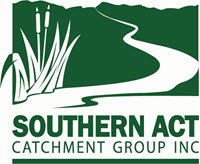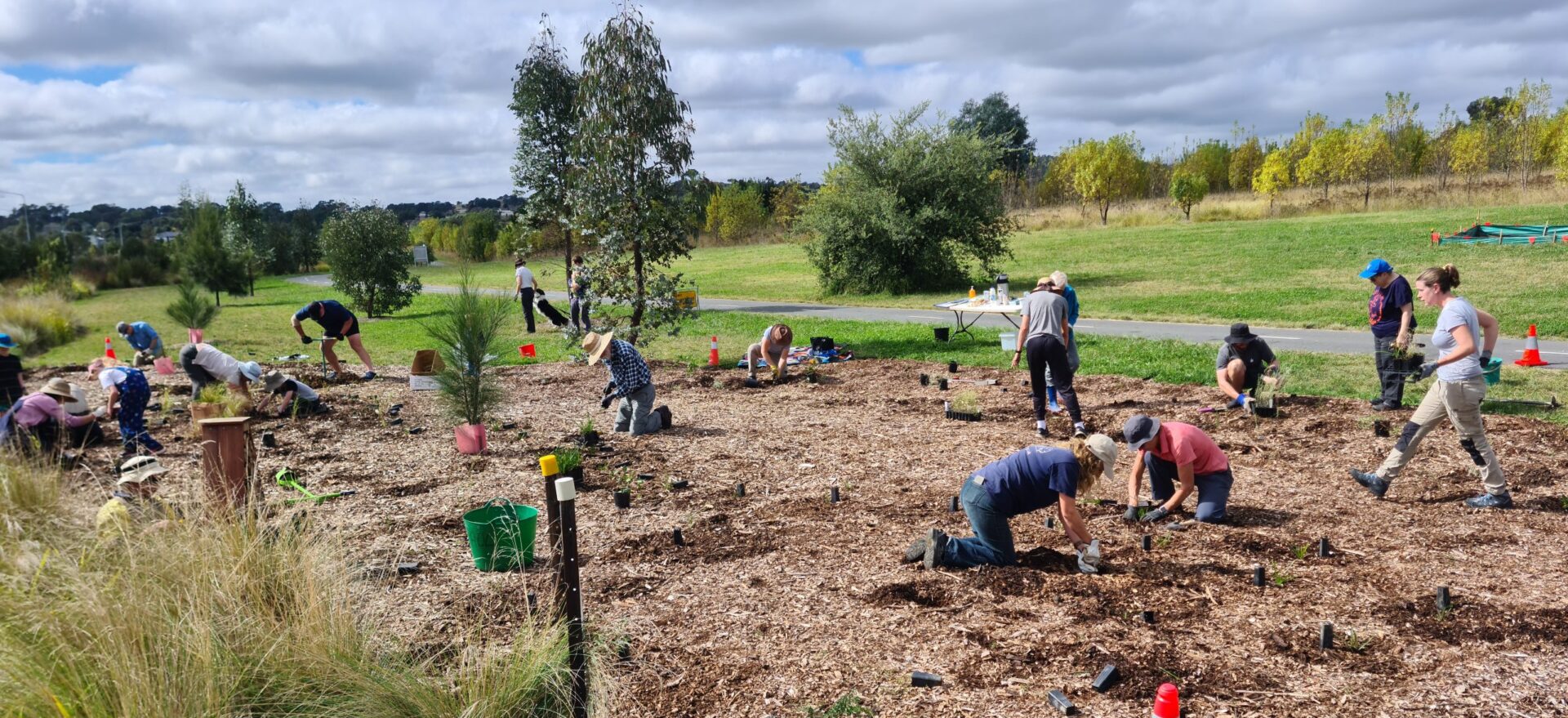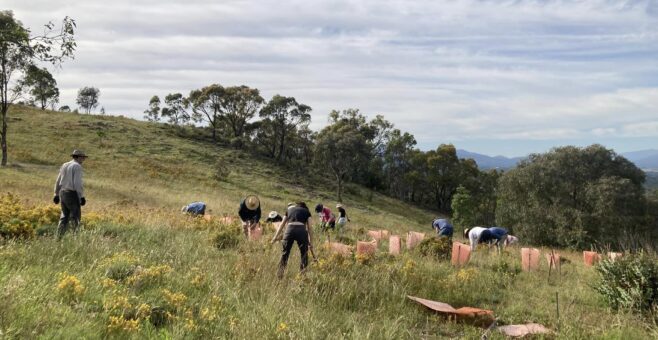How to get involved
Our volunteers are all ages. We welcome everyone.
Contact: mttaylorparkcaregroup@gmail.com or contact SACTCG at communications@sactcg.org.au
For more info check out the Facebook Page
If you want to keep up to date with news, please take a look at the Mount Taylor Facebook page.
History of the group
The original Mount Taylor Park Care Group was founded in 1989, but collapsed around a year later due to insufficient interest. The present group was started in 1991 by Anne I’Ons and four others as a measure to slow the spread of woody weeds, as well as to care generally for the mountain. Today we have a membership of around 60, meet monthly, and continue to work to maintain and extend the progress made over the past two decades. By working toward suppressing the spread of weeds, tree/shrub/grass plantings and erosion control we ensure that the mountain maintains its place as a haven for runners, walkers and various animal and plant species.
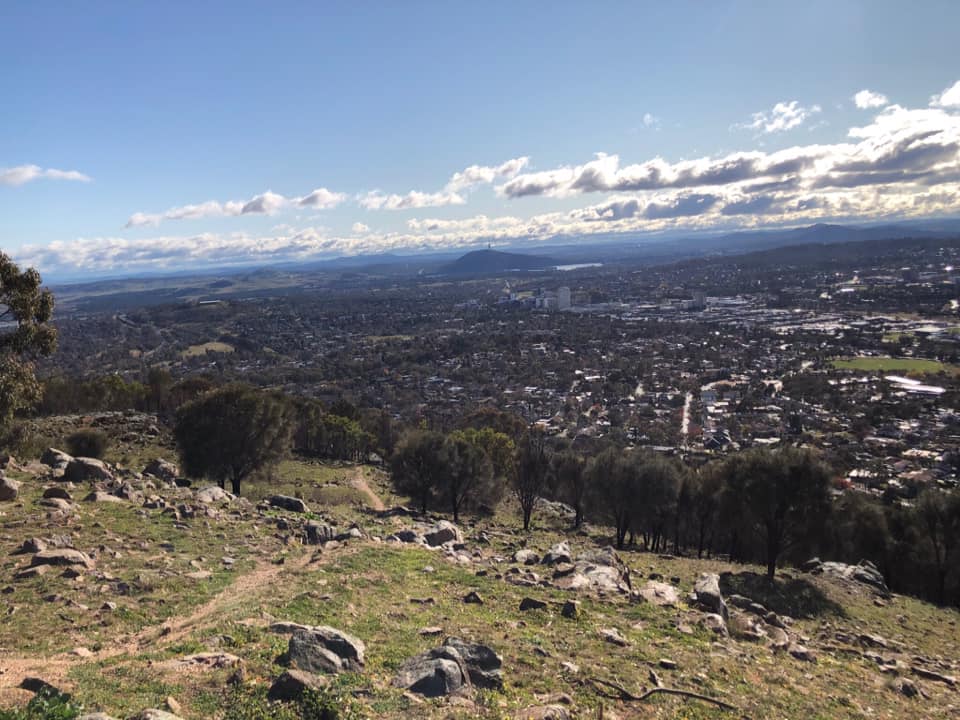
The Mount Taylor Park Care Group works in partnership with the ACT Parks and Conservation Service and often assists with planning, and projects related to the mountain and surrounding region. They were especially prominent in the rebuilding, planning and monitoring process following the 18 January 2003 firestorm, when the Parks Service was especially stretched due to the extent of the destruction.
Upon formation in 1991, the original group of 5 members mapped out a work program. For one morning or afternoon each month, and starting from the eastern side of Mt Taylor, the group used axes, saws, mattocks and herbicide to remove the mature woody weeds. The group envisaged they would work their way around the mountain in 18 months. Instead, it took 3 years. The group then returned to the start and continued their work program, gradually removing the regrowth from widely distributed seed banks. Over time, membership has risen to 60, including 20 very active members. The group is quite diverse, and includes retirees, doctors, public servants, scientists, botanists, manual workers, school children, and university students.
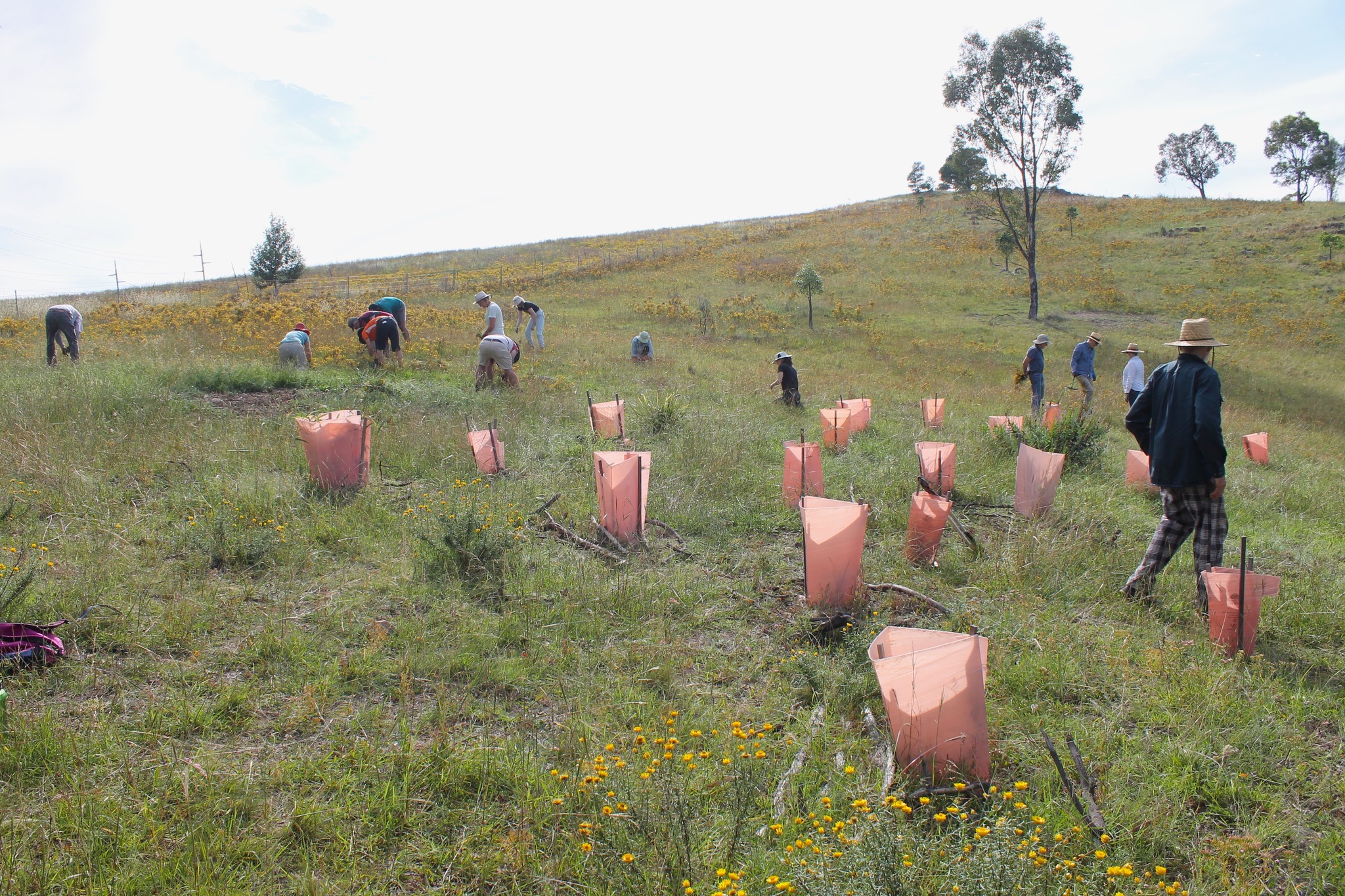 Woody weeds are now under control on Mt Taylor, but regrowth from seeds and hidden roots will be common for many years. Soft weeds have been greatly reduced in number, although completely removing them is likely to take decades due to extensive seed banks. There is also the constant threat of new infestations from land adjacent to Mount Taylor Nature Park especially invasive grass species like African Lovegrass. The 2003 bushfires actually assisted in the woody weed removal process as these resprouted first and were consequently highly visible. The group has been rewarded with a diversity of plant species reappearing overtime, including the 70 or so bird species currently living in the park.
Woody weeds are now under control on Mt Taylor, but regrowth from seeds and hidden roots will be common for many years. Soft weeds have been greatly reduced in number, although completely removing them is likely to take decades due to extensive seed banks. There is also the constant threat of new infestations from land adjacent to Mount Taylor Nature Park especially invasive grass species like African Lovegrass. The 2003 bushfires actually assisted in the woody weed removal process as these resprouted first and were consequently highly visible. The group has been rewarded with a diversity of plant species reappearing overtime, including the 70 or so bird species currently living in the park.
The group has minimal costs and were able to purchase their own tools after receiving a National Australia Bank Grant several years ago. Prior to this they were supplied with tools by Canberra Nature Parks. Herbicide was the largest expense in the past, but is now that the weed situation is under control this has dropped significantly. While there has been occasional supervision from Park rangers, the group generally works on its own.
Over the years, the Mount Taylor Parkcare group has been responsible for the removal of around 44 000 woody weeds, countless ‘soft weeds’ and the planting of over 1000 trees and understory species. Various walking trails and erosion control systems have also been implemented by the group in conjunction with the rangers from the ACT Parks and Conservation Service. The group continues to work to maintain the progress it has made, and assist with environmental decision making in the surrounding region.
Plants, Animals and the environment
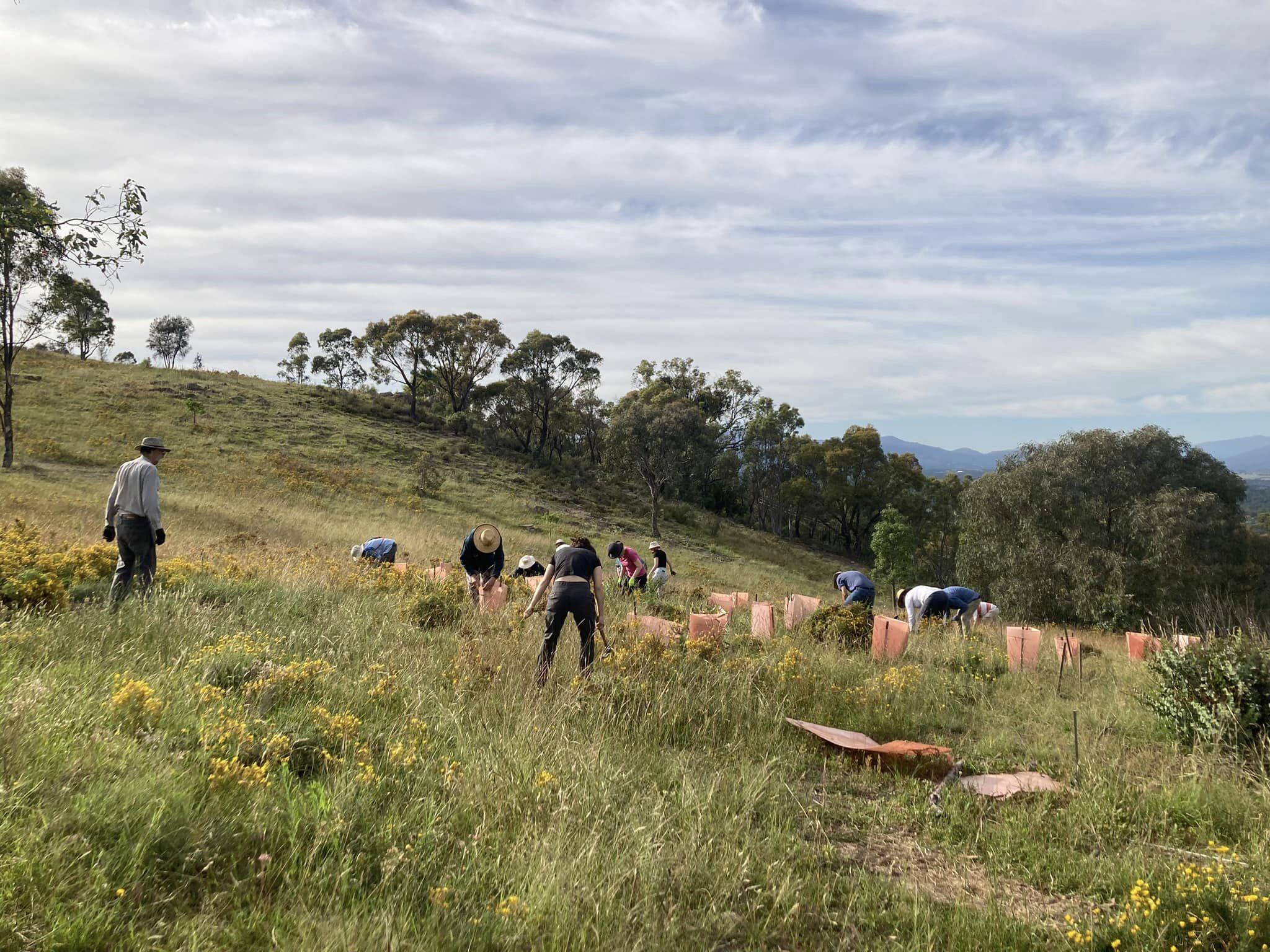 Mount Taylor covers over 5 square kilometres of ground with steep and gentle slopes up to a height of 854m. Stretching from Sulwood drive in Kambah to the Hindmarsh / Tuggeranong Parkway intersection, the mountain is both a significant landmark, and a well used recreational resource in the south Canberra region. There are two small dams on Mt Taylor, formerly erosion control structures, that provide wetland habitat for up to three frog species and many waterbirds, as well as water points for wildlife.
Mount Taylor covers over 5 square kilometres of ground with steep and gentle slopes up to a height of 854m. Stretching from Sulwood drive in Kambah to the Hindmarsh / Tuggeranong Parkway intersection, the mountain is both a significant landmark, and a well used recreational resource in the south Canberra region. There are two small dams on Mt Taylor, formerly erosion control structures, that provide wetland habitat for up to three frog species and many waterbirds, as well as water points for wildlife.
Contact the Friends of Mt Taylor Volunteers directly
While your here
Read about some of the plant species found on Mt Taylor
Mt Taylor’s dominant tree species mainly consist of various strains of eucalyptus, which are listed below. A variety of native shrub species, and several types of orchids can also be found on the mountain.
- Eucalyptus blakelyi
- Eucalyptus bridgesiana
- Eucalyptus dives
- Eucalyptus macrorhyncha subspecies macrorhyncha
- Eucalyptus mannifera
- Eucalyptus melliodora
- Eucalyptus nortonii
- Eucalyptus pauciflora
- Eucalyptus polyanthemos subspecies polyanthemos
- Eucalyptus rosii
- Eucalyptus stellulata
- Sterculiaceae: Brachycriton populneus subspecies populneus
Weeds
The mountain also unfortunately supports a few unwelcome weeds as well, which mostly arrive through proximity to household gardens. Several varieties are listed below, though the main problems now are Verbascum, St. John’s Wort, and invasive grasses.
- Cotoneaster glaucophyllus (Cotoneaster)
- Pyracantha species (Firethorn)
- Crataegus monogyna (Hawthorn)
- Rosa rubiginosa (Sweet Briar)
- Echium plantagineum (Patterson’s Curse)
- Thistle species (e.g. Silybum marianum)
- Verbascum thapsus (Great Mullein and other species)
- Hypericum perforatum (St. John’s Wort)
- Eragrostis curvula (African Lovegrass)
- Nassella neesiana (Chilean Needle grass)
- Nassella trichotoma (Serrated tussock)
